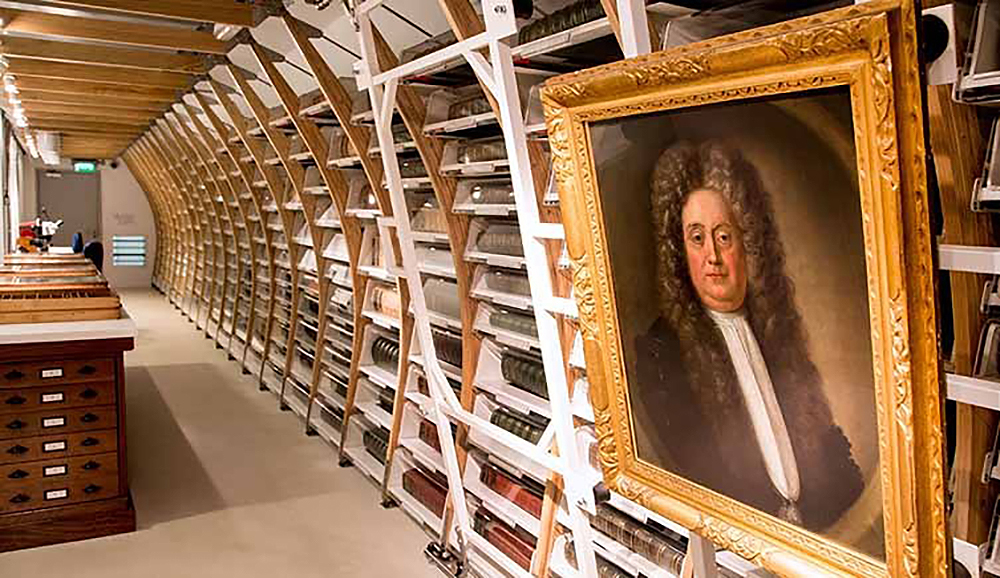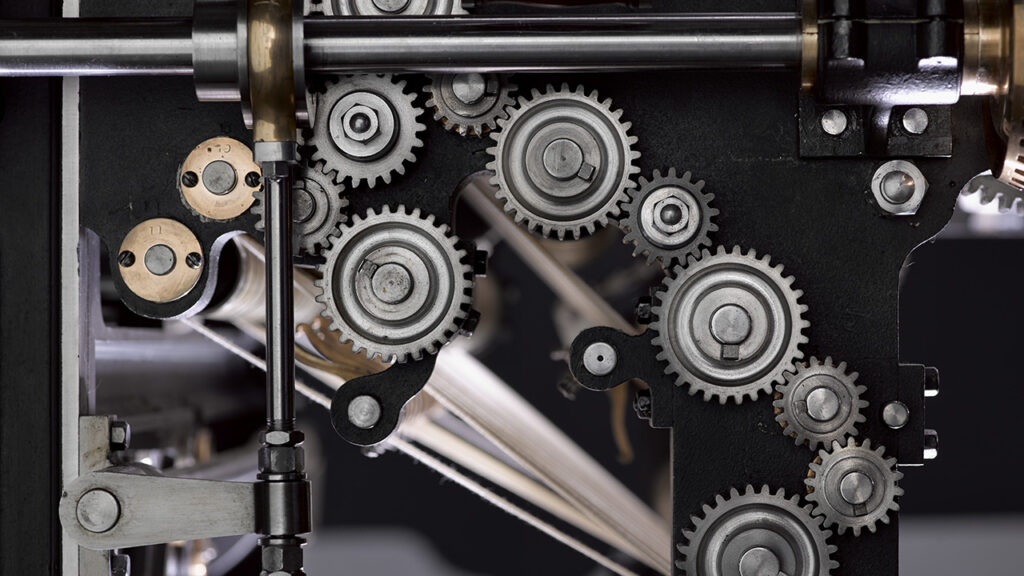Britain is in the midst of a cultural identity crisis. Brexit is redefining the country’s relationship to Europe, and in recent years the twin forces of the Windrush scandal and Black Lives Matter movement have compelled the nation to reckon with the image of multicultural Britain it purports to stand for and project.
Cultural institutions, seen by many as physical embodiments preserving the country’s troubled heritage, have been thrust into the fray. Defenestration has been demanded for statues of individuals with unpalatable histories and calls are surging for collection works acquired via colonial looting to be restituted. Less pointedly, perhaps, but most sweepingly has been the impact of pandemic lockdowns, which have prompted a thorough reevaluation of the communities Britain’s cultural organizations serve and how.

Working towards a national collection, the AHRC has funded five Discovery Projects, namely the Congruence Engine, Our Heritage, Our Stories, Transforming Collections, the Sloane Lab, and Unpath’d Waters. Image: AHRC
Out of this cultural maelstrom, the Arts and Humanities Research Council (AHRC) has launched a project ambitious in scale and scope: to create a unified national collection. The five-year $25 million investment aims to dissolve collection barriers, vastly expand access, and aid research through the service of artificial intelligence (AI) and computer learning. Towards a National Collection is, by its own judgement, “the largest of its kind to be undertaken to date, anywhere in the world.”
One major prong is represented by five Discovery Projects announced in September 2021 that together will involve 15 universities, more than 50 heritage collections, and potentially hundreds of researchers and collaborators. The projects cover broad ground from exploring the wrecks of Britain’s maritime history, to creating a digital lab for the enormous and disparate collection of Sir Hans Sloane, to questioning the meaning of British heritage given historical biases in collecting and archiving practices. Jing Culture & Commerce presents conversations with Towards a National Collection’s Program Directors and two Project Heads.
Towards a National Collection
Rebecca Bailey and Colin McDowall, Program Directors

The Sloane Lab will be an online resource pulling together the collections of Sir Hans Sloane from institutions including Natural History Museum, the British Library, and the British Museum. Image: © The Natural History Museum, London.
On a macro level, what are the benefits of building a national collection?
The principal benefit will be for users — whether that be researchers or members of the public — who will be able to search across multiple collections for the first time. You will no longer need to already know which collection has the material you are interested in; you could search across collections by subject matter, place, or person, for example.
The project pledges to increase visitor numbers and bring economic benefits to UK communities. Could you expand?
Towards a National Collection will increase access to collections and facilitate increased public engagement and community co-production, particularly through its Discovery Projects. This may in turn result in increased physical visitor numbers, which for many collection institutions will mean increased revenue. In the long term, the research and development of the program may lead to enhanced opportunities and functionality for e-commerce.
How did you go about selecting the Discovery Projects?
The selection used standard Arts and Humanities Research Council processes. This started with an open call for outline proposals. The full proposals were each assessed by two peer reviewers and one technical reviewer. A moderating panel was then convened to agree final grades for each proposal based on the reviews received. The grades of the moderating panel were then used by AHRC senior management to finalize a balanced portfolio of five projects.
Expanding accessibility is a central goal — how will you build awareness and ensure community engagement?
All the teams designing Discovery Project bids were required to address three priority areas: breaking down barriers between collections, enhancing research, and increasing public engagement. Collectively, Towards a National Collection and its funded projects have hosted a significant number of webinars, often attracting international audiences, has an active social media presence, and the work of the program is increasingly being shared through conferences hosted in the UK and beyond.
Given the project’s scale, what metrics of success are you thinking about?
We’re working towards a series of outcomes that focus on the capacity, capability, and ambition of cultural heritage organizations. We also seek to be recognized internationally and to provide the evidence to allow senior leaders and funders to make informed decisions on future digital investment.
The Congruence Engine
Dr. Tim Boon, Head of Research and Public History, Science Museum Group
Britain’s industrial revolution is indivisible from its development into the present, but many of its primary sources remain siloed in collections. The Congruence Engine will apply the latest digital techniques to collections across the country to create a “digital toolbox,” one offering a richer understanding for academics and casual audiences alike.

Using digital techniques to connect collections, the Congruence Engine aims to be a “digital toolbox” to support academic and museological research. Image: Foster stereo printing press model, 1885-88. © National Museums Scotland
What about industrial history makes it compelling for an integrated digital archive?
Industrialization is one of the biggest stories in world history. The UK’s collections are replete with evidence of what happened and where, in every medium, from looms in industrial museums via archives, maps and pictures in libraries and galleries, to films and radio or television programs in media archives. Bringing together records can make better sense of our shared histories and how our world was made.
How will this digital toolbox function?
Crucially in this project, we’re not building an “engine” but working with different programs and techniques to explore how each can help support historical and curatorial research. So the “toolbox” metaphor is appropriate: a hammer for one job, a screwdriver for another, and a wrench for a third.
What are the major challenges?
All research projects explore only partially known territory — otherwise there would be no need for the research. We’re optimistic there will be ways of bringing all kinds of data into the project, but it’s true collections data are held in a multiplicity of forms and systems; discovering the ease or otherwise of ingesting data is one of the things we will be exploring.
Our Heritage, Our Stories
Pip Willcox, Head of Research, The National Archives
An endeavor led by University of Glasgow, The National Archives, and the University of Manchester, Our Heritage, Our Stories will use AI to connect disparate community generated digital content (CGDC), both hard to find and at risk of being lost. In addition to being searchable around the globe, an initiative at The National Archives will allow the public to access, reuse, and remix the collections.
Please background CGDC and the importance of preserving it.
In the past two decades, communities have adopted digital technologies to gather and record their collections in a form of “citizen history.” CGDC has proved resistant to traditional methods of linking and integration, meaning diverse community-focused voices, which sustain the fragile histories of communities in transition, have effectively been silenced within our shared national collection. Existing solutions involving bespoke interventionist activities are expensive, time consuming, and unsustainable at scale.
Are there other projects from the UK or beyond that inspire and may prove informative?
Work to create CGDC to date has been small-scale and localized. This [AHRC] award enables the project to bring together archives specialists, historians, linguists, and experts in artificial intelligence, machine learning, and semantic web technologies to collaborate with communities who create CGDC and develop leading-edge technological resources.
How do you envisage the proposed CGDC online platform being used?
As of yet, we can’t provide a huge amount of detail. Part of this research is into the ethics of making archives sensitively and meaningfully cross-searchable. Another part is working with communities who have created CGDC to co-design the platform. Both these are important parts of the process of the research, and both will feed into the project’s iterative technical development.



